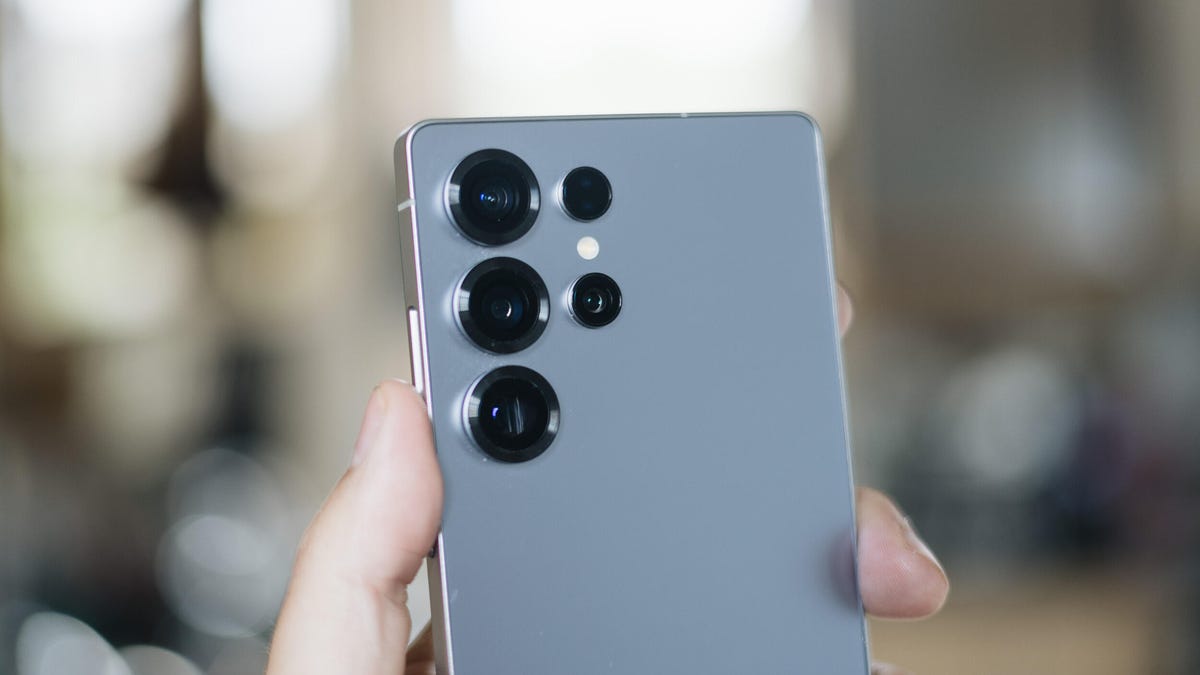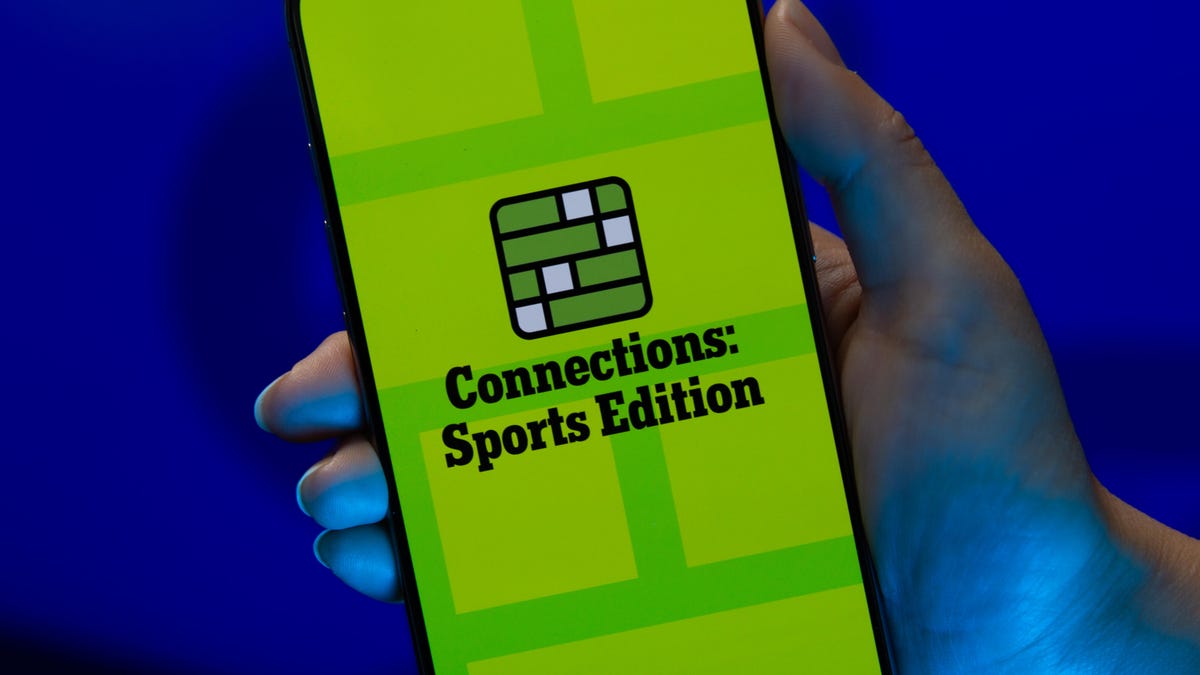Technologies
I Love This Hidden Camera Trick on the Galaxy S25 Ultra
Here’s how you can create beautiful custom photo filters on almost any recent Samsung phone.

Samsung’s Galaxy S25 Ultra has impressed us time and time again with its epic photo and video skills. It shoots some of the best images you can get from a phone in almost any conditions, while its big, vibrant display males lining up your shots a breeze. But even though I’ve been capturing photos with it for months, I recently stumbled on a little hidden tool that I didn’t notice when I first started using the phone. But now that I’ve found it, I use it all the time. It’s all about creating cool, cinematic filters for your photos.
The tool, that Samsung sometimes calls My Filters, essentially lets you steal the color tones from one image and apply it to another. Say you like the warm orangey hues on a photo from a summertime trip to Italy. Simply load that photo up and it becomes a filter you can apply to other images, either while you’re taking a photo or when you edit photos from your gallery later. It’s baked into the heart of the camera experience and it’s easy to use. Here’s how you can do it yourself.
Read More: Best Camera Phone to Buy in 2025
First, find the reference photos you want to use to create your filters. Maybe a night-time city scene with cool blue tones, or perhaps you’re looking for more dreamy, warm colors for a summer vibe. Whatever you’re after, you need to collect some images (either of your own, or any you’ve found online) and save them to your phone’s gallery.
Next, open the camera app. In the top left or right corner (depending on the orientation you’re holding your phone) you’ll see an icon that looks like three overlapping circles. This is the filter mode. Tap it to view the various built-in filters, and you’ll notice there’s a tile with a plus symbol just to the left of the built-in filters. Select this to bring up your gallery, and you’ll be invited to select a picture to use as a filter.
Choose one of your reference images, tap Create and your phone will do the rest. It analyzes the colors and contrast in the image, and then applies a filter that’s based on your reference. You’ll then see a live preview of what the effect will look like. You can rename the filter if you’d like, and then tap Done to save it.
When you take an image, that preset will be applied to the new photo. The filter also saves that effect to your phone, so you can now open any image in your gallery, press the edit button, tap the Filters button and then tap your new filter to load up the effect.
When you apply it, you can also adjust the strength of the effect, along with adjustments like contrast and color temperature. I also love that there’s an option to add film grain, which can help simulate the grain you’d see in analog photography to give your images that old-school vibe Instagram seems to be into these days.
The ability to create a custom filter is a great tool to play around with, and I’ve really enjoyed saving a variety of different images to my phone in order to use as a basis for other filters. It’s not perfect though — the effects can be very subtle. It’s not really achieving an accurate match for your source image — it’s more like it’s taking inspiration from it. I’d like Samsung to amp up the effect even more in future updates, giving us the option to tone it down a bit if it’s too strong.
I could absolutely imagine loading up example photos taken with classic film stocks like Kodak Gold, Portra 160 or Fujifilm Velvia and creating a set of filters that mimic those analogue films. One of the joys of shooting on Fujifilm’s digital cameras, like the X100VI, is the myriad of film emulation options you can achieve. This tool feels like a close approximation for Galaxy S25 owners.
I really enjoy anything like this that allows photographers like myself to play around with the look of our image while still maintaining an authentic photo, rather than altering things with generative AI. Apple’s Photographic Styles allows you to create similar color toning effects, but Samsung’s tool makes things that bit easier by letting you create looks based off reference images.
The tool was introduced on the S25 range, including the base models and the S25 Ultra. It also features on the fancy new S25 Edge. You can also find the tool on Samsung’s much cheaper Galaxy A series, and it’s been made available as a software update on older Galaxy phones, including the Galaxy S22 range. Samsung hasn’t made it clear exactly which phones support the tool, but if you own a Galaxy phone that was released over the past few years, it’s worth seeing if it’s available.
Technologies
You Can Watch an Exclusive Avatar: Fire and Ash Scene on TikTok Right Now
Disney and TikTok partner on an immersive content hub for James Cameron’s latest movie about the alien Na’vi.
If you’re not quite ready to head to the theater to watch Avatar: Fire and Ash, an exclusive scene preview might sell you on the visual spectacle. As part of a new collaboration with the social media giant, Disney is posting snippets of its new movie to its TikTok account.
This scene isn’t part of any trailer and won’t be posted to other social media accounts, making TikTok the only place you can view it — unless you buy a movie ticket. A first look at the new movie’s scenes isn’t the only Avatar-related bonus on the social media platform right now, either. TikTok has partnered with the house of mouse to bring an entire «immersive content hub» to the app.
A special section of TikTok includes quizzes and educational videos that explore the alien world of Pandora shown off in the movies. On TikTok, you can take a personality quiz to find out what Na’vi clan you most closely align with and unlock a special profile picture border to use on your account.
Science and fiction blend together with a series of videos from real doctors who explain the basis for some of Avatar’s world-building. If you want to learn about exoplanets or how realistic the anatomy of the movie’s alien animals is, these videos will feed your brain while still providing entertainment value.
Perhaps the most enticing part of Disney’s latest social media collaboration is the opportunity for fans to win prizes and trips. TikTok creators who make edits with the #TikTokAvatarContest hashtag are entered into a competition to win Avatar merchandise. The biggest winners will be able to take a trip to visual effects studio Wētā Workshop in New Zealand or visit Avatar director James Cameron’s Lightstorm Entertainment Studio in Los Angeles.
Avatar: Fire and Ash is the third installment in director Cameron’s cinematic passion project. While the first Avatar movie was released in 2009, Cameron didn’t release another entry in the franchise until 2022. In total, there is a five-movie arc planned for the indigo alien Na’vi on the moon of Pandora.
The Avatar movies are known for pushing the boundaries of CGI visual effects in cinema. They are also historically big winners at the box office: the original Avatar is the highest-grossing film of all time, earning $2.9 billion across its theatrical releases. Its sequel, Avatar: The Way of Water, is the third-highest-grossing film of all time, trailing Avengers: Endgame. You can stream those movies on Disney Plus.
It remains to be seen whether Avatar: Fire and Ash will financially live up to its predecessors. The film currently has mixed reviews from critics on Rotten Tomatoes.
Technologies
Brain-Inspired Algorithms Could Dramatically Cut AI Energy Use
A new study dives into a major redesign for AI architecture.

One major issue facing artificial intelligence is the interaction between a computer’s memory and its processing capabilities. When an algorithm is in operation, data flows rapidly between these two components. However, AI models rely on a vast amount of data, which creates a bottleneck.
A new study, published on Monday in the journal Frontiers in Science by Purdue University and the Georgia Institute of Technology, suggests a novel approach to building computer architecture for AI models using brain-inspired algorithms. The researchers say that creating algorithms in this manner could reduce the energy costs associated with AI models.
«Language processing models have grown 5,000-fold in size over the last four years,» Kaushik Roy, a Purdue University computer engineering professor and the study’s lead author, said in a statement. «This alarmingly rapid expansion makes it crucial that AI is as efficient as possible. That means fundamentally rethinking how computers are designed.»
Don’t miss any of our unbiased tech content and lab-based reviews. Add CNET as a preferred Google source. Don’t miss any of our unbiased tech content and lab-based reviews. Add CNET as a preferred Google source.
Most computers today are modeled on an idea from 1945 called the von Neumann architecture, which separates processing and memory. This is where the slowdown occurs. As more people around the world utilize data-hungry AI models, the distinction between a computer’s processing and memory capacity could become a more significant issue.
Researchers at IBM called out this problem in a post earlier this year. The issue computer engineers are running up against is called the ‘memory wall.’
Breaking the memory wall
The memory wall refers to the disparity between memory and processing capabilities. Essentially, computer memory is struggling to keep up with processing speeds. This isn’t a new issue. A pair of researchers from the University of Virginia coined the term back in the 1990s.
But now that AI is prevalent, the memory wall issue is sucking up time and energy in the underlying computers that make AI models work. The paper’s researchers argue that we could try a new computer architecture that integrates memory and processing.
Inspired by how our brains function, the AI algorithms referred to in the paper are known as spiking neural networks. A common criticism of these algorithms in the past is that they can be slow and inaccurate. However, some computer scientists argue that these algorithms have shown significant improvement over the last few years.
The researchers suggest that AI models should utilize a concept related to SNNs, known as compute-in-memory. This concept is still relatively new in the field of AI.
«CIM offers a promising solution to the memory wall problem by integrating computing capabilities directly into the memory system,» the authors write in the paper’s abstract.
Medical devices, transportation, and drones are a few areas where researchers believe improvements could be made if computer processing and memory were integrated into a single system.
«AI is one of the most transformative technologies of the 21st century. However, to move it out of data centers and into the real world, we need to dramatically reduce its energy use,» Tanvi Sharma, co-author and researcher at Purdue University, said in a statement.
«With less data transfer and more efficient processing, AI can fit into small, affordable devices with batteries that last longer,» Sharma said.
Technologies
Today’s NYT Connections: Sports Edition Hints and Answers for Dec. 17, #450
Here are hints and the answers for the NYT Connections: Sports Edition puzzle for Dec. 17, No. 450.

Looking for the most recent regular Connections answers? Click here for today’s Connections hints, as well as our daily answers and hints for The New York Times Mini Crossword, Wordle and Strands puzzles.
Today’s Connections: Sports Edition is pretty challenging. How well do you know French soccer? If you’re struggling with today’s puzzle but still want to solve it, read on for hints and the answers.
Connections: Sports Edition is published by The Athletic, the subscription-based sports journalism site owned by The Times. It doesn’t appear in the NYT Games app, but it does in The Athletic’s own app. Or you can play it for free online.
Read more: NYT Connections: Sports Edition Puzzle Comes Out of Beta
Hints for today’s Connections: Sports Edition groups
Here are four hints for the groupings in today’s Connections: Sports Edition puzzle, ranked from the easiest yellow group to the tough (and sometimes bizarre) purple group.
Yellow group hint: Put it on your noggin.
Green group hint: Goes before a division of the year.
Blue group hint: French football.
Purple group hint: Think Louisville Slugger.
Answers for today’s Connections: Sports Edition groups
Yellow group: Headgear.
Green group: Prefixes to -season.
Blue group: Ligue 1 teams.
Purple group: Batting ____.
Read more: Wordle Cheat Sheet: Here Are the Most Popular Letters Used in English Words
What are today’s Connections: Sports Edition answers?
The yellow words in today’s Connections
The theme is headgear. The four answers are cap, hat, mask and visor.
The green words in today’s Connections
The theme is prefixes to -season. The four answers are mid, off, post and pre.
The blue words in today’s Connections
The theme is Ligue 1 teams. The four answers are Lens, Marseille, Nice and PSG.
The purple words in today’s Connections
The theme is batting ____. The four answers are average, gloves, practice and stance.
Don’t miss any of our unbiased tech content and lab-based reviews. Add CNET as a preferred Google source.
-

 Technologies3 года ago
Technologies3 года agoTech Companies Need to Be Held Accountable for Security, Experts Say
-

 Technologies3 года ago
Technologies3 года agoBest Handheld Game Console in 2023
-

 Technologies3 года ago
Technologies3 года agoTighten Up Your VR Game With the Best Head Straps for Quest 2
-

 Technologies4 года ago
Technologies4 года agoBlack Friday 2021: The best deals on TVs, headphones, kitchenware, and more
-

 Technologies4 года ago
Technologies4 года agoVerum, Wickr and Threema: next generation secured messengers
-

 Technologies4 года ago
Technologies4 года agoGoogle to require vaccinations as Silicon Valley rethinks return-to-office policies
-

 Technologies4 года ago
Technologies4 года agoOlivia Harlan Dekker for Verum Messenger
-

 Technologies4 года ago
Technologies4 года agoiPhone 13 event: How to watch Apple’s big announcement tomorrow
